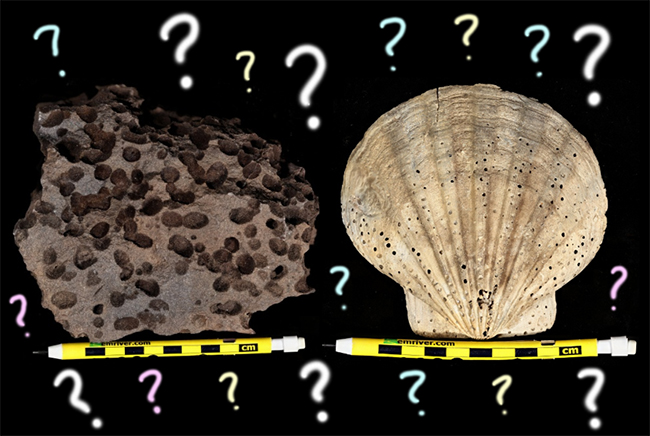Here’s a riddle for you: what gets bigger, the more you take away from it?
Answer: a hole!
Here are two geological samples that show holes. In both cases, I’m not totally sure why, and I’m hoping readers can clue me in.

First, consider this piece of ferruginous sandstone from the redbeds of the Devonian Hampshire Formation in the Valley & Ridge province of West Virginia:
Link 3.91 Gpx GIGAmacro by Callan Bentley
By volume, it’s about 30% holes – these spherical to ellipsoidal regions are weathered out “rotten” regions, where the sand is weakly lithified and crumbly. It can easily be scraped out with a fingernail or pencil. I have seen this several times in sandstones along Corridor H in West Virginia, and I’d guess that there’s some mineral concretions that grew out from some initial nucleus in these zones, and the mineral comprising those concretions is unstable at surface conditions, causing it to weather out. But I don’t know the specifics of what’s going on. Enlighten me?
Next up is a specimen of Virginia’s state fossil, the lovely Chesapecten jeffersonius, collected from the Sunken Meadow member of the Yorktown Formation in Williamsburg, Virginia (the Coastal Plain province). [This GIGAmacro is a featured image in a poster at the AGU fall meeting next week.]
Link 2.01 Gpx GIGAmacro by Callan Bentley
What interests me about this specimen is not the scallop itself, but the dozens and dozens of small holes that perforate the shell. The holes are both larger and more concentrated toward the base of the shell. They get more sparse and tinier as you work your way toward the “lip” of the shell. These are doubtless traces of some organism, but which organism, and why do they show these patterns of size and distribution? Someone, please tell me…
Clearly, I don’t have a handle on the hole story.

It has been a while, but if I remember correctly there are certain types of sponges around today that attach to shells and leave similar holes. They often kill the host organism. Very similar to barnacles on a ship it’s just a place the sponges live. My guess would be a similar sponge existed during the same time frame.
This is plausible – and I have a similar ghost of a memory in my mind of a genus called Cliona. But why then this particular distribution of holes? If it was a single killing infestation of sponge, then shouldn’t they all be at least the same size, and perhaps more evenly distributed?
Looks like radular drilling by gastropods to me, at least on the Chesapecten jeffersonius. Likely by Busycon whelks, which are also found in Yorktown Fm, and would be a likely culprit based on their feeding style. Here’s some additional info on whelks:
http://www.asnailsodyssey.com/LEARNABOUT/WHELK/whelFeed.php